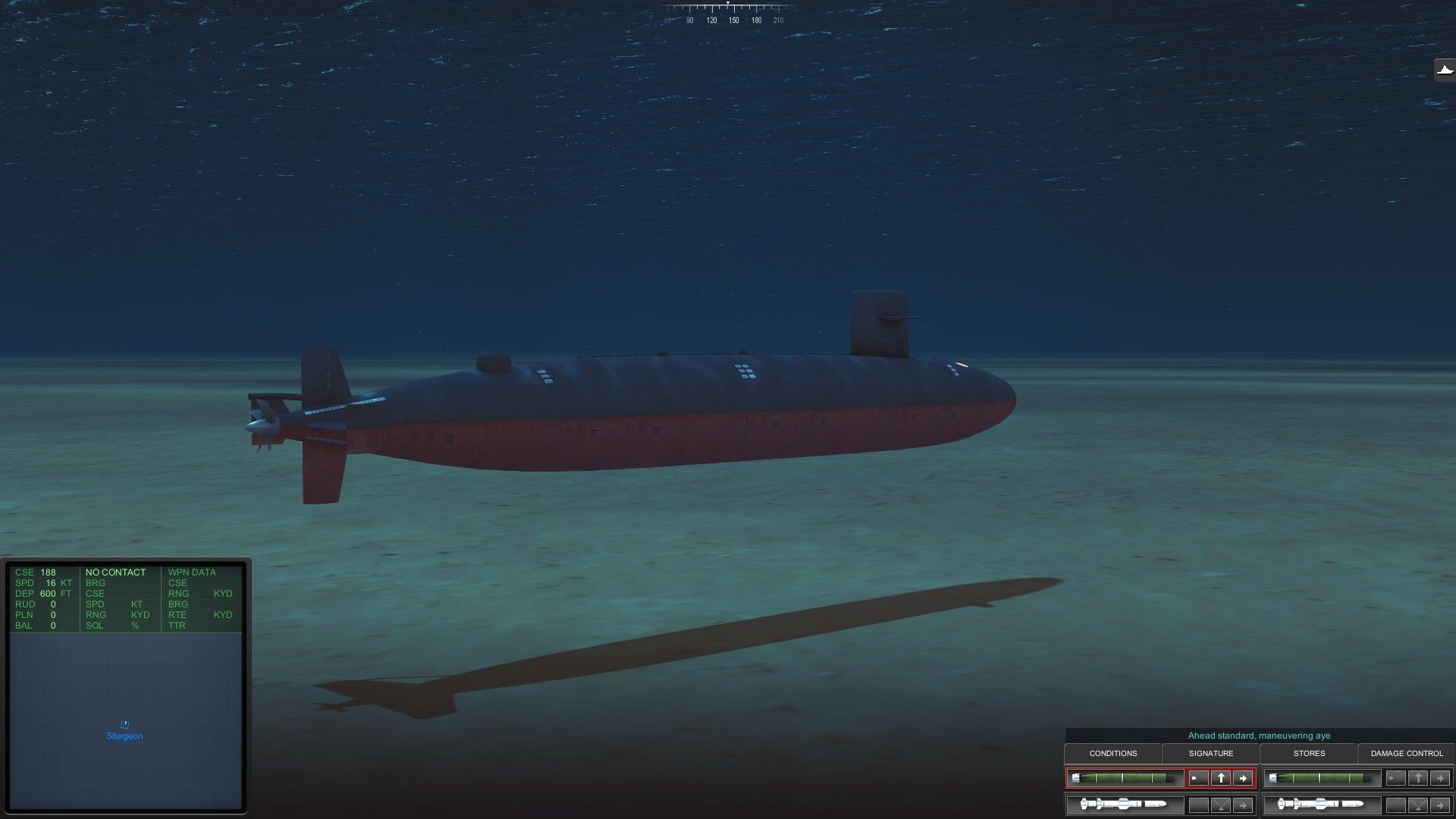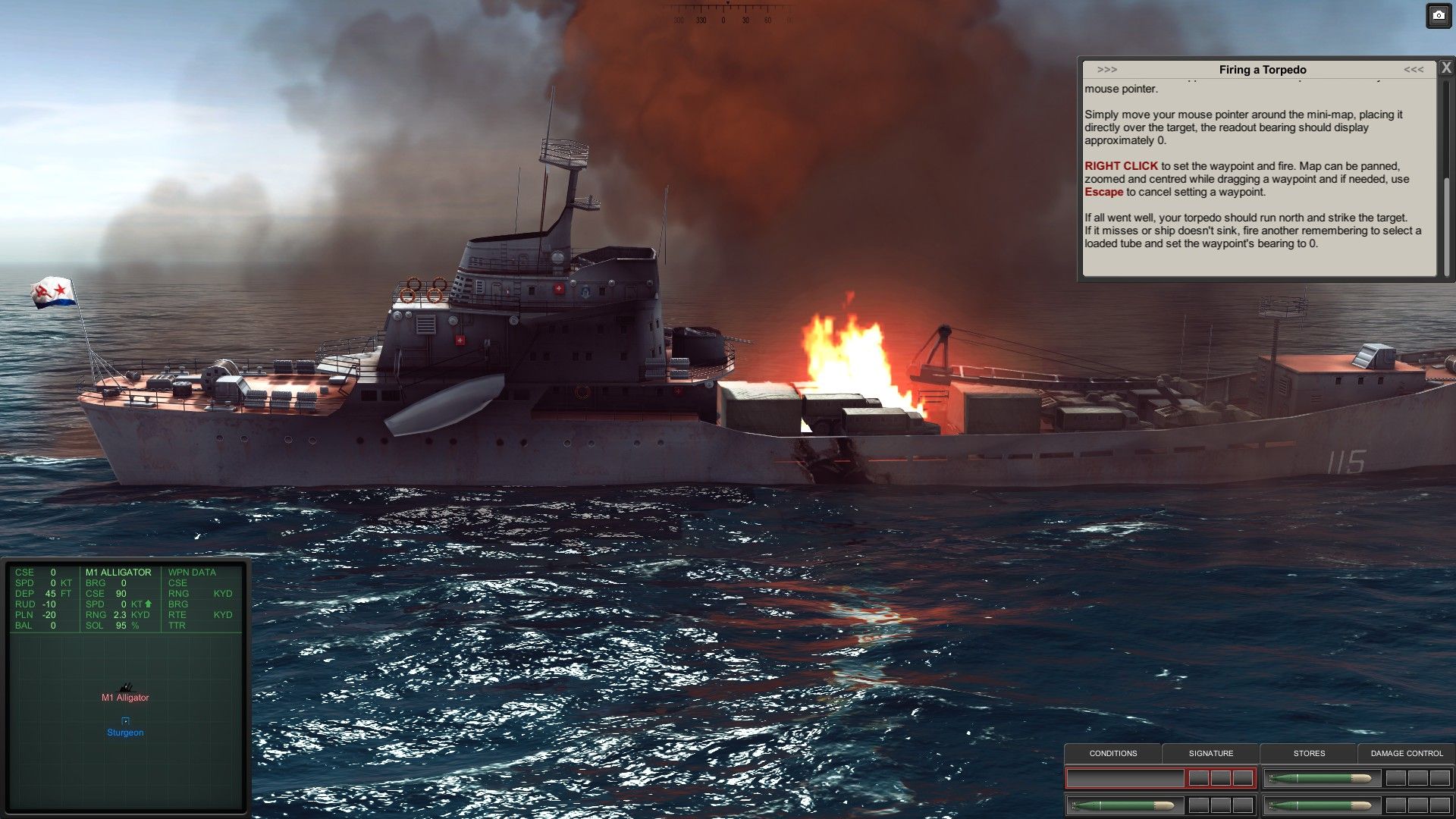Cold Waters is a tense, focused take on submarine combat
An excellent stealth game set under the sea.

My recent writing for PC Gamer has mostly been about stuff that floats on water—Man o’ War: Corsair and Sailaway—and it’s a niche I’m very happy to occupy. But despite my love of all things briny and deep, I found Cold Waters intimidating—partly because learning a new sim is always tricky, but also because what little I know about submarines was learnt from 20,000 League Under the Sea. Essentially nothing, then.
I needn’t have worried. Cold Waters doesn’t require any prior knowledge of Tom Clancy, and it does a tidy job of easing you into complex and unfamiliar systems. It might be based on older, more complicated games—it’s the spiritual successor to the 1998 Microprose game Red Storm Rising (also based on a Tom Clancy book)—but this is a streamlined implementation of a tense, cerebral combat sim.
It puts you in charge of a single US submarine hunting down Soviet naval vessels while remaining undetected yourself. Once you’ve located them using a combination of sonar, radar and visual confirmation, you take them out using missiles and torpedoes. That might sound simplistic, but ‘focussed’ is a probably better word. Your goals are relatively straightforward—although there is a bit of variation in the campaign missions—but this is more about doing one thing really well. Or in my case, doing it well enough that my sub doesn’t turn into an underwater death cupboard.

The simplicity is reflected in the presentation. The UI is clean, information is presented to you directly, and there’s no pretense to make it look or feel like you’re inside a submarine (which could be a positive or a negative, depending on your experience of Cold War submersibles). I appreciated the intelligibility, but it can be a bit sparse. There are no tooltips, either, so you’ll need to read the manual to fully understand everything. I don’t think I’ve ever played a game where I needed the tutorial more.
Can they see me? Where did the last torpedo I fired go? What happens when I accidentally shoot a whale?
Even if you’re just fighting two other vessels, there’s loads to think about—can they see me? Where did the last torpedo I fired go? What happens when I accidentally shoot a whale?—so it’s useful to have focus. To this end, the more technical elements are refined so make the information easier to parse. Instead of deciphering radars and triangulating positions, the relevant information is given to you once you’ve performed the correct actions. This makes it feel less like a straight up sim, but it’s still miles away from being action game. The balance was about right for me. I eased my way through the tutorials, taking the time to read the expanded descriptions when necessary, but still came away feeling there was loads left to learn. Answers to most of the questions are found in a comprehensive manual which can be accessed at any time, but applying that knowledge still felt like a challenge.
The greatest obstacle for me was working out exactly what I had to do to remain undetected, just because there’s so much to remember. Individually, they’re all simple things.
Popping your periscope above will reveal you on the enemy’s radar; using active sonar will reveal your position; moving too fast will cause you to cavitate, revealing your location via the treachery of bubbles. You also need to be conscious of of sound transmission, and how noise travels between thermoclines—layers which divide water according to depth and temperature. Moving at a different depth to enemy vessels can keep you concealed, but you have to be aware of sneaky enemy subs using the same tactics against you. There are also loads of defensive options you can deploy, such as noisemakers, decoy torpedos and knuckling—the art of weaving back and forth in the water to create pockets of disturbed water—all of which confuse enemy vessels and shrug off homing torpedoes.
The biggest gaming news, reviews and hardware deals
Keep up to date with the most important stories and the best deals, as picked by the PC Gamer team.

Because of this, you don’t know exactly where your enemies are all of the time. It’s a mix of prediction, science and educated guesswork, which forced me to think about every contact in an abstract way. It’s presented in a polished, 3rd person display with a free camera, but your focus should be on what signals you’re sending out to the enemy, where they think you are, and if the signals you’re chasing are genuine. I love it, but it’s unintuitive in the sense that it’s unlike anything I’ve played before. This isn’t a criticism of the controls or the game, but if you’re unfamiliar with subaqueous adventures, it takes some time to apply the overflow of knowledge practically. I quickly got the hang of the basics, and taking out enemy ships was simple (the big floating idiots) but it’s a more threatening game when you start playing cat and mouse against Soviet submarines. Again, not a bad thing—it’s just that I still don’t quite feel I’m in complete control of my destiny.
It comes together handsomely in the campaigns. You can choose between two different conflicts, one in 1968, and another in 1984. The 1968 is the tougher of the two, just because your weapons lack the finesse of the later campaign. I especially loved how the campaign told a story. Lurid newspaper pages flick onto the screen, gradually explaining an alternate history where the US moved from appeasement to open conflict with the USSR, and it adds context to the simple missions (as well as feeling curiously relevant in uncertain times). You’re assigned missions and set loose to explore a map of the North Atlantic. The exact method of doing this eluded me at first—I sat there staring at the map, wondering why nothing was happening, until I was informed via a newspaper clipping that my Spetznaz targets had invaded Norway. Whoops. Once I got the hang of it, however, there was a simple joy in pursuing enemies and watching the conflict unfold across northern Europe. The variety of missions is fun, too: one moment I was intercepting a Wolfpack of Soviet subs (or trying to, at least), the next I was scuttling troop carriers. I got a sense throughout that everything I was doing was very secret and terribly important.
I quite don’t feel like I’m operating on instinct, yet—nothing makes you feel less like a hardened skipper than stopping to read the manual, like a dad trying to navigate the Peak District with an A-Z—but I’m getting closer. And while I still love sails more than submersibles, the tense, crisp conflict of Cold Waters has give me a fresh appreciation for everything subaquatic. I’m even going to watch Hunt for the Red October this weekend. Promise.

